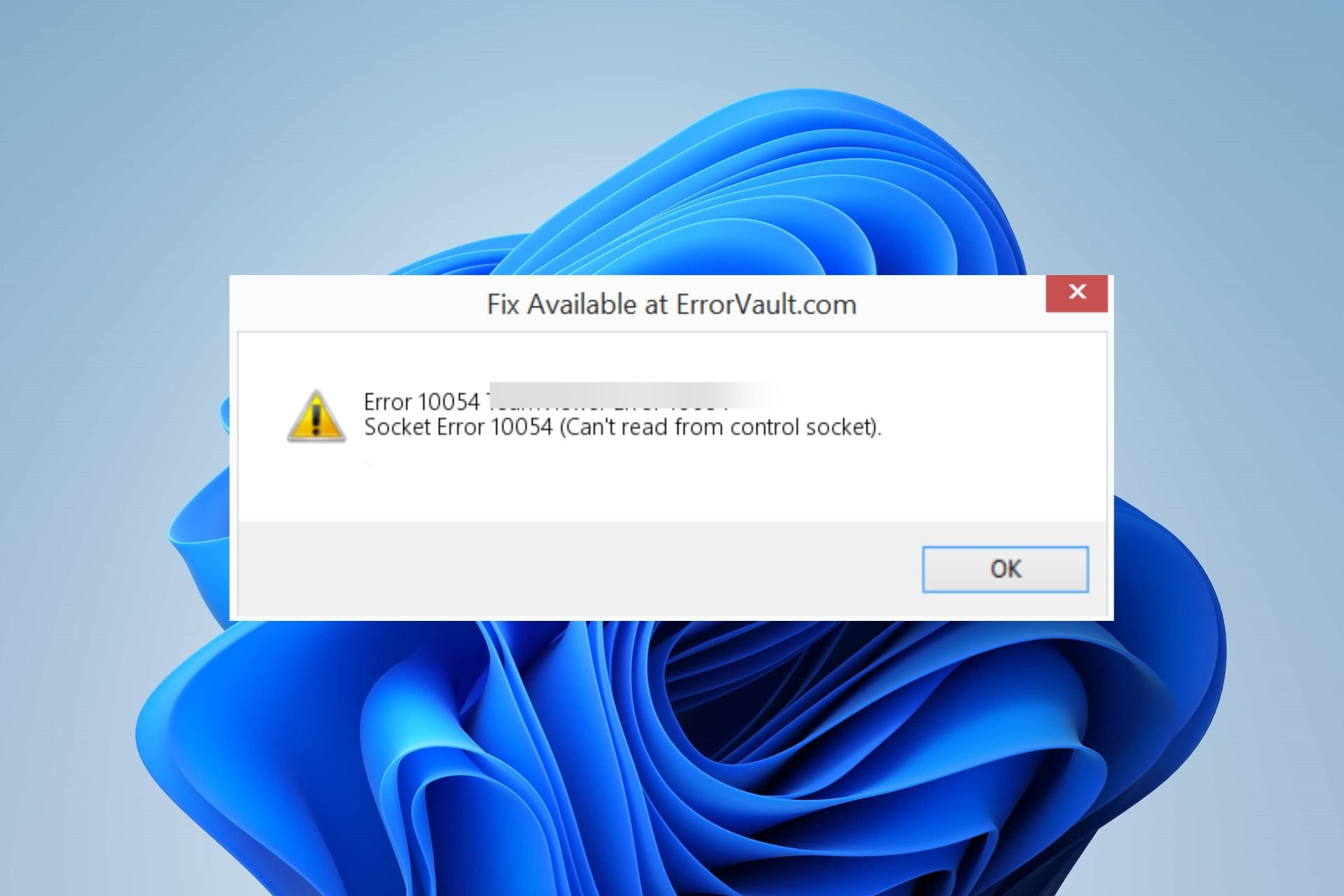Fixing Error 10054: Troubleshooting Connection Issues & TLS Handshake Problems
Are you encountering the frustrating "Winsock error 10054," often manifesting as a "connection reset by peer" or an "existing connection forcibly closed" message? This ominous error signals an unexpected termination of your connection, leaving you wondering what went wrong and how to fix it.
Error 10054, a common ailment in the world of network communications, arises when a connection is abruptly shut down by the remote host. This can happen for a myriad of reasons, from misconfigured firewalls and disabled TLS protocols to underlying issues within the operating system or application. The root causes are diverse, and the solutions require a methodical approach, taking into consideration the specific context in which the error occurs.
The heart of the problem often lies in the Transport Layer Security (TLS) handshake. When SQL Server and client applications attempt to establish a secure connection, they exchange information to verify their identities and agree on encryption methods. If this handshake fails, the connection is terminated, resulting in the 10054 error. This can be due to mismatched TLS protocols, incompatible cipher suites, or certificate issues. Understanding the nuances of these components is key to a successful resolution.
One common scenario involves Windows 7 and Windows Server 2008 R2 systems where a TDI (Transport Driver Interface) filter driver is installed. These drivers, often used for network monitoring or security purposes, can sometimes interfere with the normal operation of connections, leading to the 10054 error. In such cases, the resolution may involve specific hotfixes, registry modifications, or examining the configuration of the filter driver itself.
Another situation to consider is the aftermath of a SQL Server upgrade. Upgrading SQL Server can sometimes inadvertently disable TLS, leading to connection errors. The fix is typically straightforward: enabling TLS in the registry. This action restores the ability of the server and clients to negotiate a secure connection.
Beyond these specific examples, the 10054 error can stem from more general network issues. These could include incorrect firewall configurations, where network traffic is blocked, or basic connectivity problems like incorrect host addresses. Restarting your router or modem, checking the computer's network configuration, and scanning for malware are all fundamental troubleshooting steps.
The core message conveyed by error 10054, regardless of its specific cause, is one of abrupt connection termination. The remote host has decided to end the communication, leaving the client application in a state of uncertainty. The reasons for this termination can be as varied as the network configurations themselves, including everything from the server abruptly stopping to the client failing to properly send data.
For example, consider the situation where two Windows PCs are communicating via UDP. The program encounters a socket error 10054, reporting "An existing connection was forcibly closed by the remote host." This can be caused by issues on the receiving end, such as an improperly configured network, the remote host stopping, or even security measures that are blocking the connection.
As the error message indicates that the target host closed the connection unexpectedly, troubleshooting typically begins with examining the server side of the connection. The server application could have crashed, been shut down by an administrator, or encountered an internal error that forced it to close its sockets. Simultaneously, it is always good practice to check the network infrastructure, including firewalls, routers, and other potential traffic bottlenecks.
Lets look at another situation where the git openssl errno 10054 error appears. This typically appears when trying to establish a connection with the server and the connection is rejected. This commonly arises when using Git on a system that is not configured properly, and the error relates to Secure Sockets Layer (SSL) or Transport Layer Security (TLS) protocols. Fixing this usually involves verifying the proper functioning of your network settings, ensuring that the right server addresses are used, or updating the OpenSSL libraries.
The error also surfaces in the context of SQL Server Management Studio (SSMS). In the event of a SQL Server upgrade, or changes in the network settings, such connection failures can be frequently witnessed. Enabling TLS in the registry often corrects this problem, ensuring that the client and server can securely communicate.
The error can also be a result of peer-to-peer connectivity issues. In scenarios where a remote application stops unexpectedly, the host may use a "hard close" to end the socket connections. The application might have stopped, the host could have been restarted, or the network interface has been disabled. The detailed information about the so_linger option related to remote sockets may be found with the setsockopt function.
Many Windows socket 2 functions do not return the specific cause of the error. Please refer to the topic of "handling winsock errors" for details.
When investigating this error, it is also important to rule out the basic network and configuration problems. As well as incorrect address, and a lack of connectivity due to router problems, security programs, or firewall settings, can interfere with the communication of programs.
The "connection reset by peer" message also implies a disruption on the remote end. When the remote host stops the process, that stops the connection. Several issues may be at play here, and a variety of techniques are used to find out what's happening.
Error 10054 is a common issue that can be triggered by a variety of problems, including server software errors, sudden connection drops, or instability in the network itself.
In summary, the "connection reset by peer" message provides important information that a remote host closed the connection. Therefore, the examination must include the server, the network path, and the client.
To better illustrate the troubleshooting process, let's examine a hypothetical case. Imagine a user is trying to connect to a SQL Server 2005 instance. The error message "The remote host forcibly closed an existing connection" (error code 10054) appears. Heres a systematic approach to finding the solution:
- Verification of Credentials: Confirm the account and password are correct.
- System Operation Checks: Make sure the system is operational, the services are working, and the connections are active.
- Registry Modification: If those steps are fine, you may need to add `tls_rsa_with_3des_ede_cbc_sha` to the front of the cipher suite in the Windows registry, if the setup is running on an older system.
In more sophisticated settings, you may need to check the system's security protocols.
Many factors can result in the error. From faulty firewall settings or issues with the server to issues with the network connection, this means a methodical approach to resolve the issue is a must. If the initial connection steps don't offer any results, it is best to check your network infrastructure. Check if the right computer or host address is entered.
In certain situations, you can solve the problem by reinstalling the program, restarting the router, or checking for malware. In a UDP communication setup, for example, the error can show up when the remote host terminates the connection. In these cases, you need to investigate the communication route, the server settings, and the application setup.
| Aspect | Details |
|---|---|
| Error Code | 10054 (WSAECONNRESET) |
| Common Message | "Connection reset by peer" or "An existing connection was forcibly closed by the remote host." |
| Primary Cause | Unexpected closure of a connection by the remote host. |
| Possible Triggers |
|
| Troubleshooting Steps |
|
| Affected Protocols | TCP, UDP, and any protocol built on top of these. |
| Operating Systems | Windows (all versions), and potentially other operating systems with Winsock implementations. |
| Applications | SQL Server, Git, any client-server application utilizing network sockets. |
| Impact | Interrupted communication, inability to connect to remote services. |


Detail Author:
- Name : Nelda Rogahn
- Email : xdouglas@bayer.com
- Birthdate : 2007-01-29
- Address : 5328 Terry Parks Floridaland, NV 49557
- Phone : (539) 761-2548
- Company : Gutmann, Beahan and Schultz
- Job : Pile-Driver Operator
- Bio : Et voluptatem sequi laborum aperiam ut debitis. Earum voluptatum qui molestiae. Vel quam id voluptates perspiciatis. At et eaque fugit eveniet sunt deleniti quas.